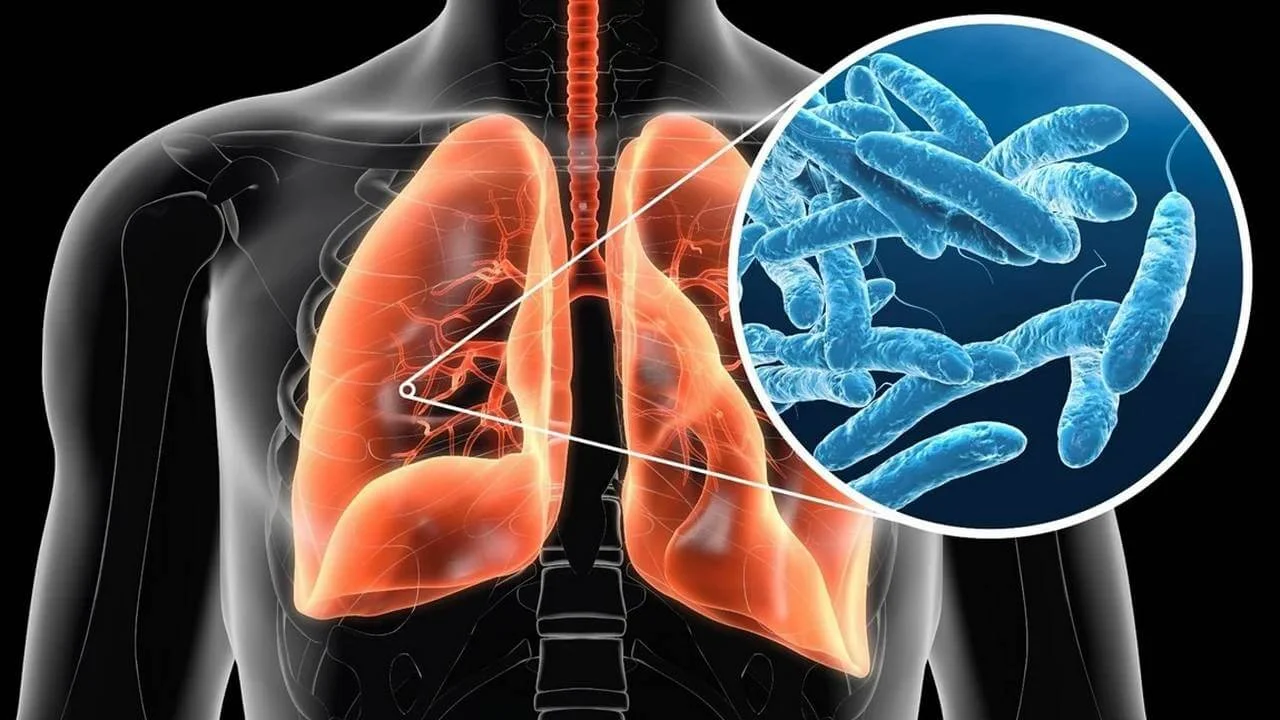Legionnaires’ Disease: Causes, Symptoms, Diagnosis, and Treatment
Legionnaires’ disease is a serious lung infection linked to contaminated water sources. Understand its risks, symptoms, and how to prevent it.

Legionnaires’ disease is a serious respiratory illness caused by infection with Legionella species, most commonly Legionella pneumophila. It is a type of atypical pneumonia that can become severe, especially in vulnerable individuals. The infection is contracted through inhalation of contaminated water aerosols, rather than through person-to-person transmission.
Cause
- Caused by Legionella bacteria, primarily Legionella pneumophila.
- Naturally present in freshwater environments (rivers, lakes, streams).
- Disease usually occurs when the bacteria multiply in:
- Cooling towers (air conditioning systems in large buildings)
- Hot water tanks and heaters
- Showerheads and faucets
- Decorative fountains and spas
- Humidifiers and misting systems
- Infection occurs via inhalation of aerosolized water droplets containing the bacteria.
- Person-to-person transmission is extremely rare and not a recognized route of infection.
Risk Factors
- Age over 50 years
- Smoking (current or former)
- Chronic lung diseases (e.g., COPD)
- Immunocompromised status (e.g., cancer, organ transplant, HIV)
- Underlying medical conditions (e.g., diabetes, renal disease)
- Recent hospitalization or stay in long-term care facilities
Symptoms
- Appear 2 to 10 days after exposure.
- Resemble other types of pneumonia, often with additional systemic symptoms.
- Common features include:
- High fever, chills, and malaise
- Cough (usually dry, sometimes with sputum)
- Shortness of breath and chest pain
- Muscle aches and headache
- Gastrointestinal symptoms: nausea, vomiting, abdominal pain, diarrhea
- Neurological symptoms: confusion, disorientation (in severe cases)
Diagnosis
- Clinical presentation is non-specific and overlaps with other respiratory infections.
- Diagnosis is confirmed using laboratory investigations:
- Urinary antigen test: Rapid and widely used; detects L. pneumophila serogroup 1.
- Sputum culture: Requires specialized media (buffered charcoal yeast extract agar).
- PCR testing: Detects Legionella DNA in respiratory specimens.
- Serology: Used for retrospective diagnosis; not useful in acute management.
- Chest radiography typically shows infiltrates consistent with pneumonia.
Treatment
- Requires prompt antibiotic therapy; delays increase risk of complications.
- First-line antibiotics:
- Macrolides (e.g., azithromycin)
- Fluoroquinolones (e.g., levofloxacin, moxifloxacin)
- Duration of therapy: Usually 7 to 14 days depending on severity and clinical response.
- Supportive care:
- Oxygen supplementation
- Fluid and electrolyte management
- Hospitalization may be required in severe or high-risk cases.
- With timely and appropriate treatment, most patients recover.
- Mortality ranges from 5% to 30%, highest among immunocompromised and hospitalized individuals.
Prevention
- Focuses on controlling Legionella growth in man-made water systems.
- Key preventive measures:
- Regular maintenance and disinfection of water systems
- Monitoring water temperature (hot ≥60°C, cold ≤20°C)
- Preventing water stagnation in pipes and tanks
- Routine microbiological testing in high-risk facilities (e.g., hospitals, hotels)
- No vaccine currently available.
- Personal protective strategies (e.g., avoiding hot tubs or poorly maintained spas) may help reduce exposure in high-risk individuals.
Final Note
Legionnaires’ disease is a preventable but potentially fatal form of pneumonia. It emphasizes the importance of environmental health and water system management. Recognizing the symptoms early and initiating appropriate antibiotic therapy significantly reduces the risk of severe outcomes. Awareness among healthcare providers and the public is essential for timely diagnosis and control of this disease.
The information on this page is peer reviewed by a qualified editorial review board member. Learn more about us and our editorial process.
Last reviewed on .
Article history
- Latest version
Reference(s)
- Mayo Clinic. “Legionnaires’ Disease.”, 19 April 2025 Mayo Clinic <https://www.mayoclinic.org/diseases-conditions/legionnaires-disease/symptoms-causes/syc-20351747>.
- Centers for Disease Control and Prevention. “Legionella (Legionnaires’ Disease and Pontiac Fever).”, 9 June 2025 Centers for Disease Control and Prevention <https://www.cdc.gov/legionella/about/index.html>.
- Phin, Nick., et al. “Epidemiology and clinical management of Legionnaires’ disease.” The Lancet Infectious Diseases, vol. 14, no. 10, 23 June 2014, pp. 1011-1021., doi: 10.1016/S1473-3099(14)70713-3. <https://doi.org/10.1016/s1473-3099(14)70713-3>.
Cite this page:
- Posted by Dayyal Dungrela